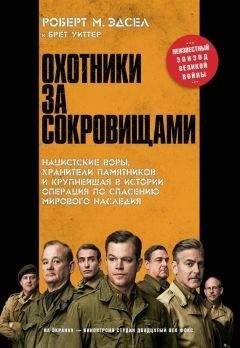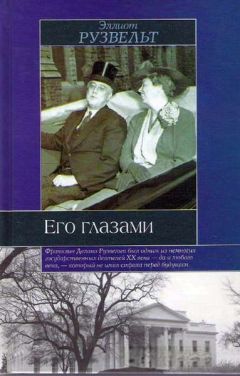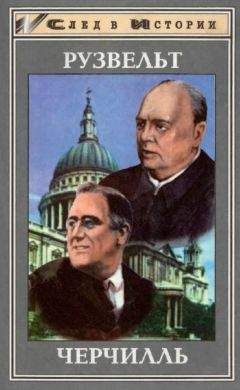• Davidson, Eugene. The Trial of the Germans: An Account of the Twenty– two Defendants Before the International Military Tribunal at Nuremberg. New York: Macmillan, 1996.
• D’Este, Carlo. Patton: A Genius for War. New York: HarperCollins, 1995.
• D’Este, Carlo. Eisenhower: A Soldier’s Life. New York: Henry Holt, 2002.
• Duberman, Martin. The Worlds of Lincoln Kirstein. New York: Alfed A. Knopf, 2007.
• Dulles, Allen W. Secret Surrender: The Classic Insider’s Account of the Secret Plot to Surrender Northern Italy During WWII. Guilford, CT: Lyons Press, 2006.
• Edsel, Robert M. Rescuing Da Vinci: Hitler and the Nazis Stole Europe’s Great Art, America and Her Allies Recovered It. Dallas: Laurel Publishing, 2006.
• Eisenhower, David. Eisenhower at War, 1943–1945. New York: Random House, 1986.
• Eisenhower, Dwight D. At Ease: Stories I Tell to Friends. New York: McGraw-Hill, 1988.
• Esterow, Milton. The Art Stealers. New York: Macmillan, 1966.
• Fasola, Cesare. The Florence Galleries and the War. Florence: Casa Editrice Monsalvato, 1945.
• Feliciano, Hector. The Lost Museum: The Nazi Conspiracy to Steal the World’s Greatest Works of Art. New York: Basic Books, 1995.
• Fest, Joachim. Inside Hitler’s Bunker: The Last Days of the Third Reich. New York: Farrar, Straus and Giroux, 2002.
• Flanner, Janet. Men and Monuments. New York: Harper & Brothers, 19 5 7.
• Friemuth, Cay. Die Geraubte Kunst. Berlin: Westermann, 1989.
• Goldensohn, Leon. Nuremberg Interviews. New York: Knopf, 2004.
• Gray, Martin, and A. Norman Jeffares, eds. A Dictionary of Quotations. New York: Barnes and Noble Books, 1995.
• Hammer, Katharina. Glanz im Dunkel: Die Bergung von Kunstschätzen im Salzkammergut am Ende des 2. Weltkrieges. Wien: Österreichischer Bundesverlag, 1986.
• Hancock, Walker, with Edward Connery Lathem. A Sculptor’s Fortunes.
• Gloucester, MA: Cape Ann Historical Association, 1997.
• Hapgood, David, and David Richardson. Monte Cassino: The Story of the Most Controversial Battle of World War II. Cambridge, MA: Da Capo, 2002.
• Hastings, Max. Victory in Europe: D– Day to VE Day in Full Color. Boston: Little, Brown, 1985.
• Hirshon, Stanley P. General Patton: A Soldier’s Life. New York: Perennial, 2003.
• Hitler, Adolf. Mein Kampf. Translated by Ralph Manheim. New York: Houghton Miff in, 1943.
• Hobbs, Joseph. Dear General: Eisenhower’s Wartime Letters to Marshall. Baltimore: Johns Hopkins University Press, 1999.
• Howe, Thomas Carr, Jr. Salt Mines and Castles. New York: Bobbs-Merrill, 1946.
• Hughes, Anthony. Michelangelo. London: Phaidon, 1997.
• Joachimsthaler, Anton. The Last Days of Hitler: The Legends – The Evidence – The Truth. Translated by Helmut Bögler. London: Arms and Armour Press, 1996.
• Kirstein, Lincoln. The Poems of Lincoln Kirstein. New York: Atheneum, 1987.
• Kubin, Dr. Ernst. Sonderauftrag Linz: Die Kunstsammlung Adolf Hitler, Aufbau, Vernichtungsplan, Rettung. Ein Thriller der Kulturgeschichte. Wien, Austria: ORAC Buch– und Zeitschriftenverlag, 19 89.
• Kurtz, Michael J. America and the Return of Nazi Contraband: The Recovery of Europe’s Cultural Treasures. Cambridge, UK: Cambridge University Press, 2006.
• Linklater Eric. The Art of Adventure. London: Macmillan & Co, Ltd., 19 47.
• Löhr, Hanns Christian. Das Braune Haus der Kunst: Hitler und der “Sonderauftrag Linz”.Berlin: Akademie Verlag, 2005.
• Majdalany, Fred. Cassino: Portrait of a Battle. London: Cassell & Co., 1999.
• Methuen, Lord. Normandy Diary: Being a Record of Survivals and Losses of Historical Monuments in North– Western France, Together with Those in the Island of Walcheren and in That part of BelgiumTraversed by 21st Army Group in 1944–45. London: Robert Hale Limited, 1952.
• Nazi Conspiracy and Aggression, Vol. III. Washington, DC: U. S. Government Printing Off ce, 1946.
• Nicholas, Lynn. The Rape of Europa. New York: Vintage, 1995.
• Petropoulos, Jonathan. Art as Politics in the Third Reich. Chapel Hill: University of North Carolina Press, 1996.
• Petropoulos, Jonathan. The Faustian Bargain: The Art World in Nazi Germany. Oxford University Press, 2000.
• Piña, Leslie A. Louis Rorimer: A Man of Style. Kent, OH: Kent State University Press, 1990.
• Pöchmüller, Dr. Ing. Emmerich. Welt– Kunstschätze in Gefahr. Salzburg: Pallas-Verlag, 1948.
• Puyvelde, Leo van. Van Eyck: The Holy Lamb. London: Collins, 1947.
• Rayssac, Michel. L’Exode des Musées: Histoire des Oeuvres d’Art Sous l’Occupation. Paris: Editions Payot & Rivages, 2007.
• Report of the American Commission for the Protection and Salvage of Artistic and Historic Monuments in War Areas. Washington, DC: U. S. Government Printing Off ce, 1946.
• Riedl-Dorn, Christa. Das Haus der Wunder: Zur Geschichte des Naturhistorischen Museums in Wien. Wien, Austria: Holzhausen, 1998.
• Rorimer, James J. Survival: The Salvage and Protection of Art in War. New York: Abelard Press, 1950.
• Roxan, David, and Ken Wanstall. The Rape of Art. New York: Coward-McCann, 1964.
• Sasser, Charles W. Patton’s Panthers: The African– American 761st Tank Battalion in World War II.New York: Pocket Books, 2005.
• Schrenk, Christhard. Schatzkammer Salzbergwerk: Kulturgüter überdauern in Heilbronn und Kockendorf den Zweiten Weltkrieg. Heilbronn, Germany: Stadtarchiv, 1997.
• Schwarz, Birgit. Hitlers museum: Die Fotoalben Gemä ldegalerie Linz. Vienna: Böhlau Verlag, 2004.
• Sereny, Gitta. Albert Speer: His Battle with Truth. New York: Alfred A. Knopf, 1995.
• Shirer, William L. Berlin Diary: The Journal of a Foreign Correspond e n t : 19 3 4 – 19 41. Norwalk, CT: The Easton Press, 1991.
• Shirer, William L. The Rise and Fall of the Third Reich: A History of Nazi Germany, Volumes I and II. Norwalk, CT: The Easton Press, 1991.
• Sigmund, Anna Maria. Die Frauen der Nazis. Munich: Wilhelm Heyne Verlag, 2000.
• Simon, Matila. The Battle of the Louvre: The Struggle to Save French Art in World War II. New York: Hawthorne Books, 1971.
• Simpson, Elizabeth, ed. Spoils of War. New York: Harry N. Abrams, 19 9 7.
• Skilton, John D., Jr. Defense de l’art Européen: Souvenirs d’un off cier américan “Spécialiste des Monuments”.Paris: Les Editions Internationales, 1948.
• Smyth, Craig Hugh. Repatriation of Art from the Collecting Point in Munich after World War II. New Jersey: Abner Schram Ltd., 1988.
• Speer, Albert. Inside the Third Reich. New York: Macmillan, 1970.
• Spotts, Frederic. Hitler and the Power of Aesthetics. Woodstock and New York: Overlook Press, 2002.
• Trial of the Major War Criminals before the International Military Tribunal: Nuremberg 14 November 1945–1 October 1946. Nuremberg: International Military Tribunal, 1947.
• Tutaev, David. The Consul of Florence. London: Secker and Warburg, 1966.
• Valland, Rose. Le Front de l’Art: 1939–1945. Paris: Librarie Plon, 19 61.
• Vasari, Giorgio. Lives of the Artists: Volume I. Translated by George Bull. London: Penguin 1987.
• Wheelock, Arthur K., ed. Johannes Vermeer. The Hague: Royal Cabinet of Paintings, Mauritshuis and the Board of Trustees, National Gallery of Art, Washington, 1995. Published in conjunction with the exhibit “Johannes Vermeer” shown at the National Gallery of Art, Washington, and the Royal Cabinet of Paintings Mauritshuis, The Hague.
• Whiting, Charles. Bloody Aachen. New York: Stein and Day, 1976.
• Woolley, Lt. Col. Sir Leonard. The Protection of the Treasures of Art and History in War Areas. London: His Majesty’s Stationery Offce, 19 47.
• Yeide, Nancy. Beyond the Dreams of Avarice: The Hermann Goering Collection. Dallas: Laurel Publishing, 2009.
• “A l’Institut: Gaston Palewski fait l’éloge d’un grand défenseur des Beaux– Arts Jacques Jaujard”. Le Figaro, November 21, 1968.
• Bradsher, Greg. “Nazi Gold: The Merkers Mine Treasure”. Prologue Magazine31, no. 1 (Spring 1999).
• Canady, John. “James Rorimer Left Cloisters to Excel in a Bigger J o b ”. New York Times, May 12, 1966.
• Chamson, André. “In Memoriam, Jascques Jaujard”. Musees et Collections Publiques(1967): 151–153.
• Cohn, Marjorie B. “George Stout’s Legacy”. Journal of the American Institute for Conservation18, no. 1 (1978).
• Esterow, Milton. “Europe is Still Hunting its Plundered Art”. New York T i me s, November 16, 1964.
• Gibson, Michael. “How a Timid Curator with a Deadpan Expression Outwitted the Nazis”. A R Tn e w s8 0 (Su m m e r 19 81): 10 5 –111.
• Hammett, Ralph. “Comzone and the Protection of Monuments in North– West Europe”. College Art Journal5, no. 2 (Jan. 1946): 123–126.
• Hammond, Mason. “The War and Art Treasures in Germany”. College Art Journal5, no. 3 (March 1946): 205–218.
• Hancock, Walker. “Experiences of a Monuments Off cer in German y ”. College Art Journal5, no. 4 (May 1946): 271–311.
• Houghton, Arthur A., Jr. “James J. Rorimer”. The Metropolitan Museum of Art Bulletin(Summer 1966, Part Two).
• Kirstein, Lincoln. “Quest for the Golden Lamb”. Town and Country100, no. 428 (Sept. 1945): 115.
• McGregor, Neil. “How Titian Helped the War Effort”. The Times(London), June 5, 2004.





